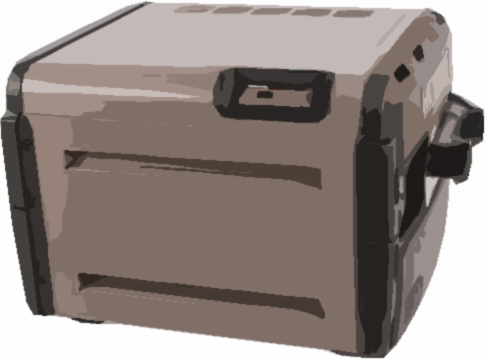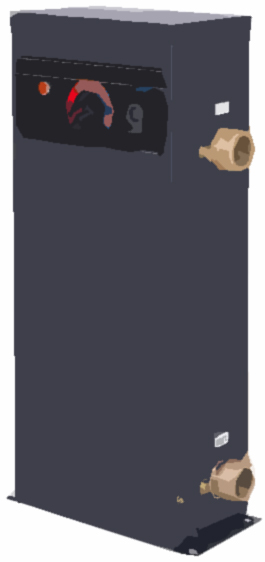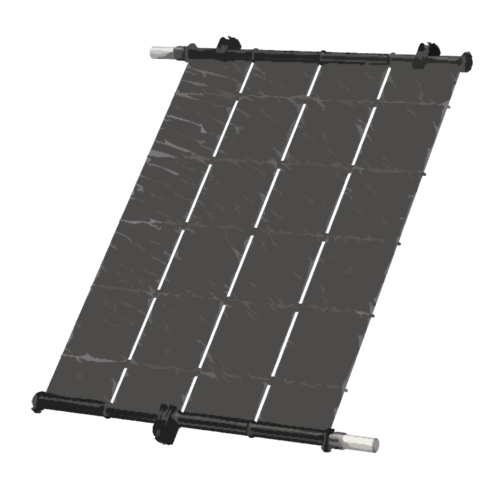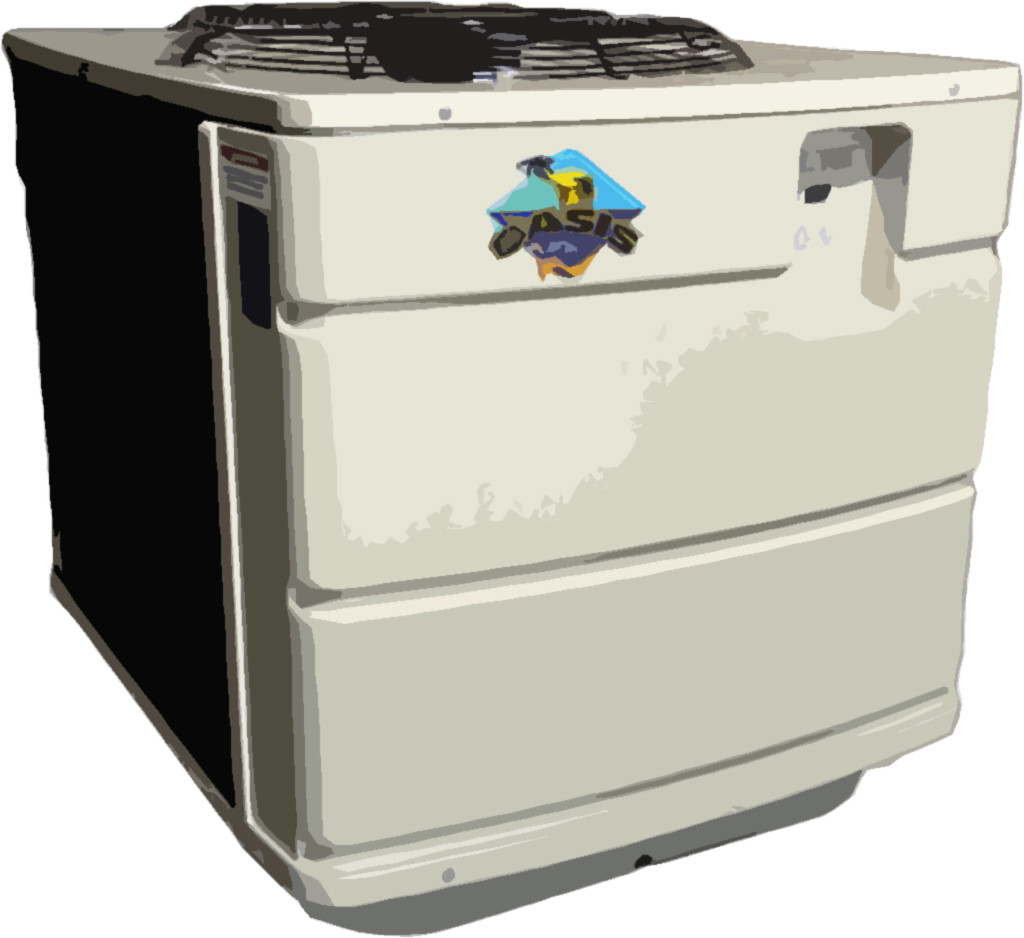You’re trying to heat up your pool so you can swim more often throughout the year. Right?
Or maybe you’re a new pool owner, and the idea of an ice cold pool is simply terrifying.
[New pool owner? Check out our Pool Owner Guide]
Whatever your reasons may be, know that you’re making an excellent investment.
A pool heater extends your swim season. Allowing you to spend more time in the pool. Enjoying comfortable swims even when the temperature drops. But you probably already know that, which is why you came across this guide to buying pool heaters. So let’s get right to it.
As a pool owner, you have 4 options for heating your pool. Gas heaters, Electric Resistance heaters, Pool Heat Pumps, and Solar heaters. In this post we discuss how each works, purchase and operation costs, and the unique pros and cons of each option. And by the end, you should have a solid idea of which option is the best pool heater for you.
Side note: We’re covering a lot in this post. But we don’t discuss the best pool heater brand. That’s for you to decide!
How To Choose The Best Pool Heater 2016
Gas Pool Heater



-How it works
Gas pool heaters work exactly how you would expect them to – burning gas to produce heat for your pool water. But let’s break down the process a bit.
Gas pool heaters use either natural gas or propane. Which they move to a combustion chamber, where it is burned to produce heat. Below the chamber sits a fan that helps push the heat upwards towards the heat exchanger. This is where your pool water and the heat produced by combustion combine. From there, the unit sends the heated water back into the pool.
[Want a more in-depth explanation? Check out our post on how gas pool heaters work]
+Additional details
Ignition types
In order to get combustion started, gas pool heaters use one of two types of ignitions.
Millivolt ignitions, which work in the same style as the pilot light in gas stoves. Or Electronic ignitions, which create a quick spark of electricity to ignite the burner.
Typically, electronic ignitions are safer and less likely to cause any costly or hazardous gas leaks.
-Initial cost and Installation
Gas heaters themselves are on the lower end of the pool heater price spectrum. Ranging between $1000-$3000.
But all gas heaters require a dedicated gas line. Sourced from either a city gas line or a propane tank. Which means you’ll likely need to hire a professional for the installation. Meaning that installation costs can end up being just as much as the heater itself.
-Operation cost
Although gas heaters aren’t too pricey up front, they’re among the most expensive pool heaters to operate. As most people know, gas isn’t cheap. And propane is even more expensive.
With that in mind, the average monthly cost of running gas heaters ranges between $300-$500.
-Pros and Cons
Pros
-Low initial cost
-Fast heating
-Year-round operation (unaffected by temperature)
Cons
-Expensive to run (requires gas or propane)
-Can include expensive installation charges
-Not environmentally friendly (c02 emissions)
-Short lifespan (5-10 years)
Summary:
In most cases, gas heaters are the best pool heater for hot tubs/small spas. Or as backup heaters to more energy efficient heating options. They’re fast and can run year round which is a plus. But even the best gas pool heater still requires a lot of fuel to heat an average backyard swimming pool. Which racks up operation costs that cancel out a lot of the benefits.
Electric Resistance Pool Heater



-How it works
These pool heaters are fairly simple in their operation. Generating heat through electric currents, electric resistance heaters draw energy from an external power source and apply it a resistor. The resistor acts as the unit’s heating element, warming up pool water as it passes through the unit. Simultaneously being cooled down by the same water in preparation for the next heating cycle.
[Want a closer look? Here’s how electric resistance pool heaters work]
-Initial cost
Electric resistance pool heaters range from $1000-$5000, which makes them fairly affordable up front. But despite being electrically powered, electric resistance heaters are not very energy efficient. And in many cases, they require heavy wiring and amperage, which adds to installation costs.
-Operation cost
With a low COP (Coefficient of Performance) of 1.0, the average monthly cost of running an Electric Resistance heater sits between $500-$600. Making them the most expensive to operate of all the pool heating options.
-Pros and Cons
Pros
-Fast heating
-Lower initial cost
-Year-round operation
Cons
-Expensive operation costs
-Short lifespan (5-10 years)
-Heavy amperage and wiring
requirements can increase
installation costs
Summary:
Electric Resistance pool heaters are quick to heat and are likely the best pool heater in terms of simplicity. But in terms of everyday use, they’re much like gas heaters. Best used for smalls spas or as backup units to energy efficient heating options. Otherwise expect a major increase on your electric bill.
Solar Pool Heater



-How it works
One of the most environmentally friendly pool heating options available, Solar heaters source their heat naturally. Using a heating process that involves two major parts: the pool pump and solar panels.
The pool pump sends cold water up to the solar panels. Which store heat generated from direct sunlight. As water passes through the panels, the stored heat warms it up. From there, the heated water flows back into the pool.
-Installation cost
Solar pool heating systems incur an initial cost (including installation) of around $3000-$5000. And although that may seem pricey, it’s important to consider the next point.
-Operation cost
Solar heaters generate heat naturally, from the sun. So technically speaking, a solar pool heater costs $0 a month to operate. However, it’s important to factor in two important variables.
The first being sunlight. If the solar panels aren’t receiving multiple hours of direct sunlight, then that means no heating. At all. Which is why a lot of solar pool heater owners use a pool heat pump as a backup.
Second, your pool pump. It’s the heart of a solar pool heating system and needs to be strong enough to move water against gravity and throughout the entire heating chain. Specifically, it has to have enough power to pump water up to the solar panels, likely located on your roof. The average pool pump isn’t designed to meet such demanding requirements. Which means you may have to upgrade your pump to a more powerful model. Increasing installation costs. Also, consider the additional energy that will be needed to run the pool pump more often.
Also, consider the additional energy that will be needed to run the pool pump more often.
-Pros and Cons
Pros
-Low operation costs
-Long lifespan 10-20 years
-100% Eco-Friendly
Cons
-Weather restricted : Can only work with direct sunlight
-High installation cost
-Takes up a lot of space (panels)
-Heats slowly
Summary:
Solar pool heaters are an eco-friendly, and cost-effective way to heat your pool. And they’re one of the two best pool heater options for those who live in sunny states. But installing them can be pricey. And even the best solar pool heater still requires direct sunlight for consistent heating. Which is why coupling a solar heater with a pool heat pump may just be the best way to achieve a perfect balance.
Pool Heat Pump



In comes the happy medium to every option we’ve mentioned so far. Pool heat pumps are the most preferred among pool owners for a number of reasons. But we’ll get into that shortly
-How it works
The heating process of a pool heat pump is complex, yet highly efficient.
It starts with a fan that pulls warm air into the unit. Which gets passed over an evaporator coil. The liquid refrigerant contained within the coil reacts with the heat from the warm air, evaporating into a warm (eco-safe) gas. The gas is then moved into a compressor, where it becomes pressurized and heated further. The hot gas is then pumped to the heat exchanger, into titanium tubing. The heated tubing warms the water as passes through before it’s sent back into the pool.
[Want to know more? Here’s our post on how pool heat pumps work]
-Installation cost
The average initial cost of a pool heat pump sits between $2000 – $5000. But most units will also require a dedicated breaker, which adds a bit to installation costs. But luckily, this is offset but low operation costs.
-Operation cost
Pool heats pump mainly use electricity to power the fan/compressor and feature a COP of 6.0. Meaning they have a fairly low pull on electricity at around $50-$150 per month. Making them the cheapest pool heater to operate next to solar pool heaters.
But there is a small downside.
Pool heat pumps are temperature restricted. So when the temperature outside drops below 50 degrees, the unit will experience low performance, and in colder conditions, will not run. But since most pool owners do their swimming in the spring and summer seasons, and not in the dead of winter, this isn’t really a major issue.
-Pros and Cons
Pros
-Low operation costs/High energy efficiency
-Eco-friendly
-All-weather performance (rain, sunshine, cloudy)
-Long lifespan (10-20 years)
Cons
-Temperature restricted
-Requires dedicated breaker
-Heats water slower than Gas and Electric
Summary:
Like solar heaters, pool heat pumps are also one of the best pool heater options for people living in sunny states. And despite temperature restrictions, they can still significantly extend your swim season. Plus, they offer a stellar balance between performance and energy efficiency that other pool heating options can’t match.
What size pool heater do I need? | Pool heat pump sizing calculator
If you’re trying to figure out how to size a pool heater for a swimming pool, there are two things you have to know:
BTUs and basic math.
BTUs are the units used to size pool heaters, or rather measure their output. It’s quite literally a numerical representation of the amount of heat a pool heater can produce. With that in mind, let’s move forward to the math part.
Here’s how to calculate the best pool heater size for your pool:
1.) Determine your target pool water temperature
2.) Look up the average (weather) temperature of the coldest month in the year.
3.) Subtract the coldest average temperature from your target pool water temperature
Ex.) 80 degrees – 60 degrees = 20 degrees
This is your Temperature Increase
3.) Multiply the length of your pool by the width to calculate pool surface area
Ex.) 15 (width) x 30 (length) = 450 (Pool Surface Area (in square feet))
4.) Use this formula to calculate the BTU power needed to heat your pool:
Pool Surface Area x Temperature Increase x 12 = BTUs needed
Ex.) 450 x 20 x 12 = 108,000 BTUs
Based on our example, you would need a pool heater that generates at least 108,000 BTUs.
How To Choose The Best Pool Heater | Closing Remarks
We hope this guide to buying a pool heater helps you find the best pool heater for your needs. As you can see, each option comes with advantages and disadvantages. So it’s up to you to figure out what matters to you the most. But for many it’s cost and performance, which is why we recommend using pool heat pumps. They’re eco-friendly, cost-effective, and energy efficient.
And if you’re already considering a pool heat pump, check out this post.


